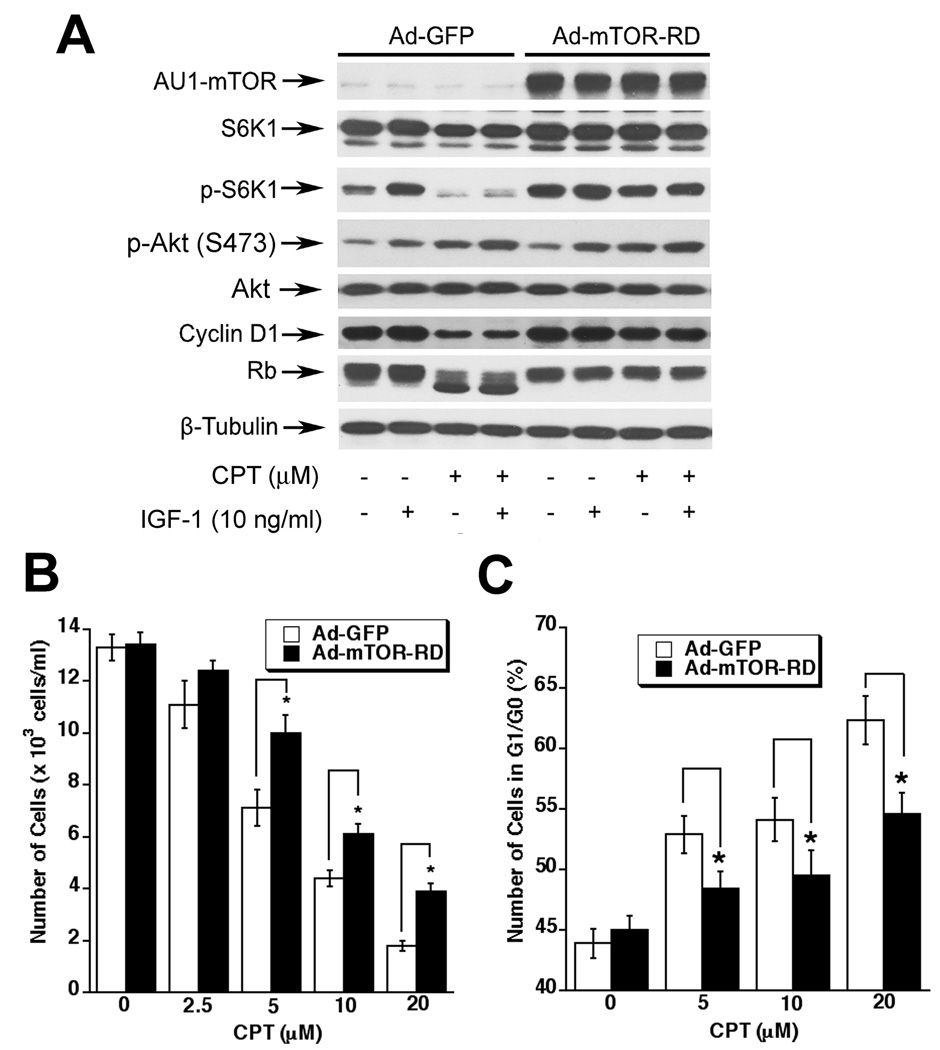Fig. 6. Expression of constitutively active mTOR confers high resistance to CPT inhibition of mTOR signaling, cyclin D1 expression and Rb phosphoryaltion, and partially prevents CPT inhibition of cell proliferation in cancer cells.
(A) Rh30 cells, grown in 6-well plates and infected with Ad-GFP or Ad-mTOR-RD for 24 h, and treated with or without CPT (10 µM) for 2 h, followed by stimulation with or without IGF-1 (10 ng/ml) for 1 h. The cell lysates were subjected to Western blot analysis with indicated antibodies. β-Tubulin was used for loading control. (B,C) Rh30 cells, grown in 6-well plates and infected with Ad-GFP or Ad-mTOR-RD for 24 h, were treated with CPT (0–20 µM) respectively for 24 h, followed by cell counting using a Beckman Coulter Counter (B), or cell cycle analysis (C). Results are presented as mean ± SE (n = 3). *P < 0.05, difference vs. control.

